Klaviyo Email Segmentation Guide (Using Post-Purchase Survey Data)
Segmenting your email lists is one of the higher ROI activities you can do within your email marketing strategy with segmented audiences returning 3x the revenue of an unsegmented audience, with half the unsubscribe rate to boot. Yet, most companies don’t start properly segmenting customers until they have a dedicated email marketer. It’s a cumbersome process and once customers are segmented by previous purchase behavior, what else is left?
Our Klaviyo integration helps Fairing users solve this problem! Goodbye “master” list, hello segmentation. Fairing users currently collecting post-purchase survey responses can now push that data directly to Klaviyo, providing a valuable dimension for email segmentation and analysis.
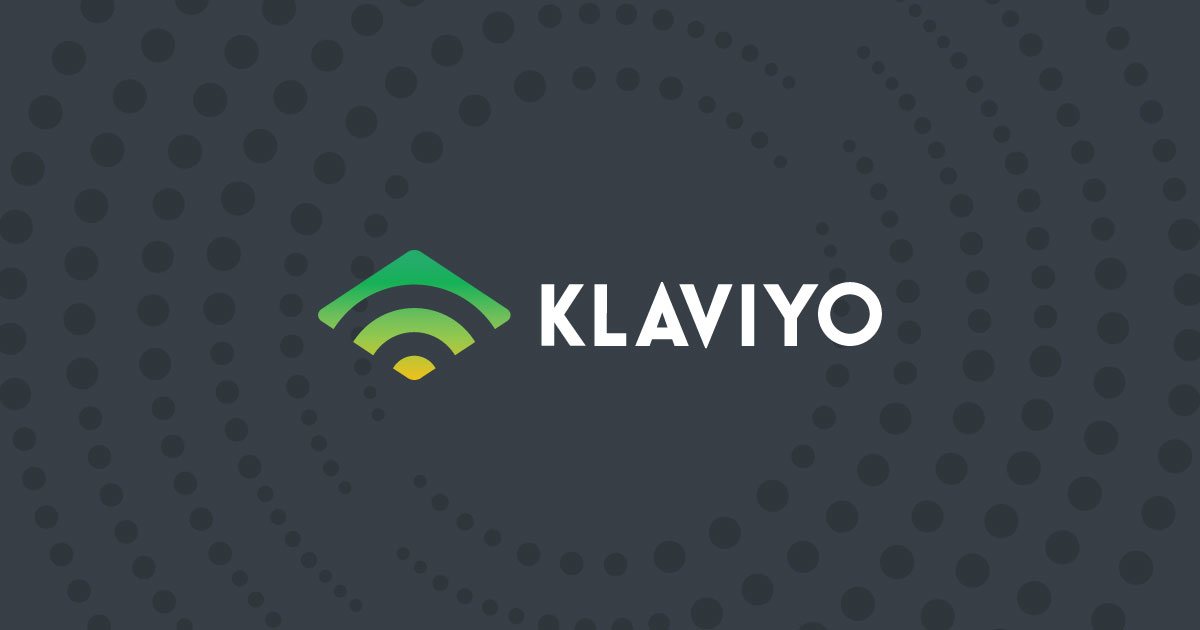
How It Works
Immediately after a customer submits a response to your Fairing survey, we add the question and response to the customer’s profile within your Klaviyo account. Set up takes less than a minute and only requires you to copy and paste your Klaviyo API key onto the Fairing integrations page.
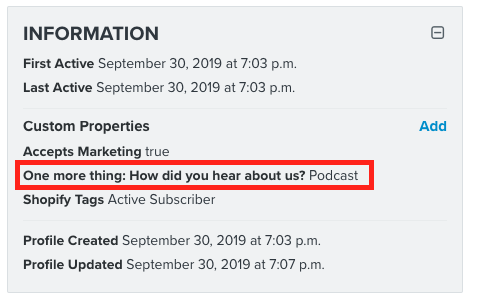
Fairing allows us a much deeper personalization of our email marketing, Fairing’s Klaviyo integration has been a request since we first signed up, and so far we’ve seen amazing results using survey responses to speak to our customers in a personalized way. Taylor Sicard , Homesick Candles
More Post-Purchase Survey Data. Easier Segmentation in Klaviyo.
Sending more targeted emails and reducing the amount of times you simply send a “blast” to your master list is often regarded as the most effective approach to email marketing. This strategy comes down to proper segmentation, which can only be done with individual customer data, whether that be order history, customer location, open rate, or in this case: survey response.
How did you hear about us?
Most of our customers are using Fairing for marketing attribution — asking some form of the question “How did you hear about us?”. By pushing this data to Klaviyo, you can send targeted emails based on point of discovery and insights into customer preferences. For example, if a specific blogger appears multiple times as a response, you can create a specific Klaviyo Flow that sends relevant content related to your brand and that blogger to those specific users, “Did you know Blogger XYZ, also recommends this product?”
For example, suppose customers are letting you know that they are hearing about you through influencers. Then you can ask them which influencer in a follow up question.
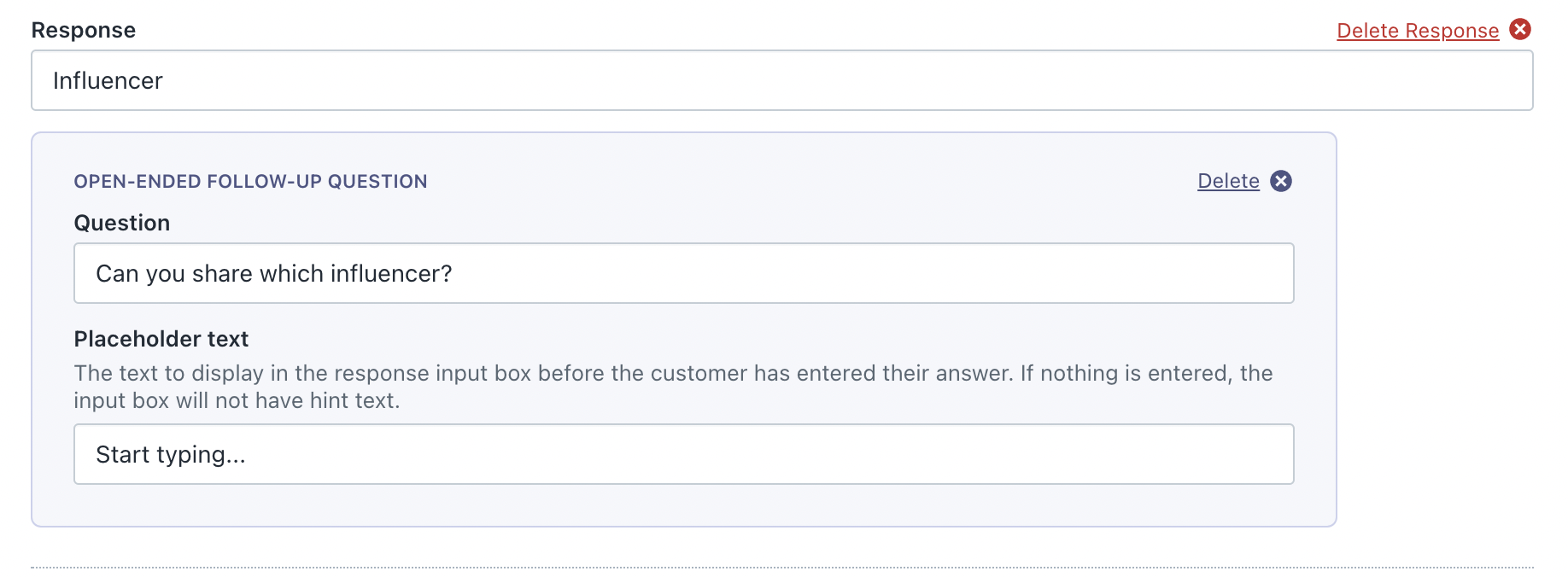
If a specific influencer appears multiple times as a response, you can create a specific Klaviyo Flow that sends relevant content related to your brand and that influencer to those specific users, “Did you know Influencer XYZ, also recommends this product?”
Who are you purchasing for?
The Buyer vs User problem plagues most businesses, and interestingly enough, it pops up in almost every category when the purchase in question is a gift. It’s tricky because the gifting audience is unlikely to identify themselves, and depending on how much of your customer base they make up, that audience can hamper your ability to analyze retention and engagement data. But asking your customers, “Who are you purchasing for?” can light up different paths to highly personalized brand experiences for your customers, especially when pushed to Klaviyo.
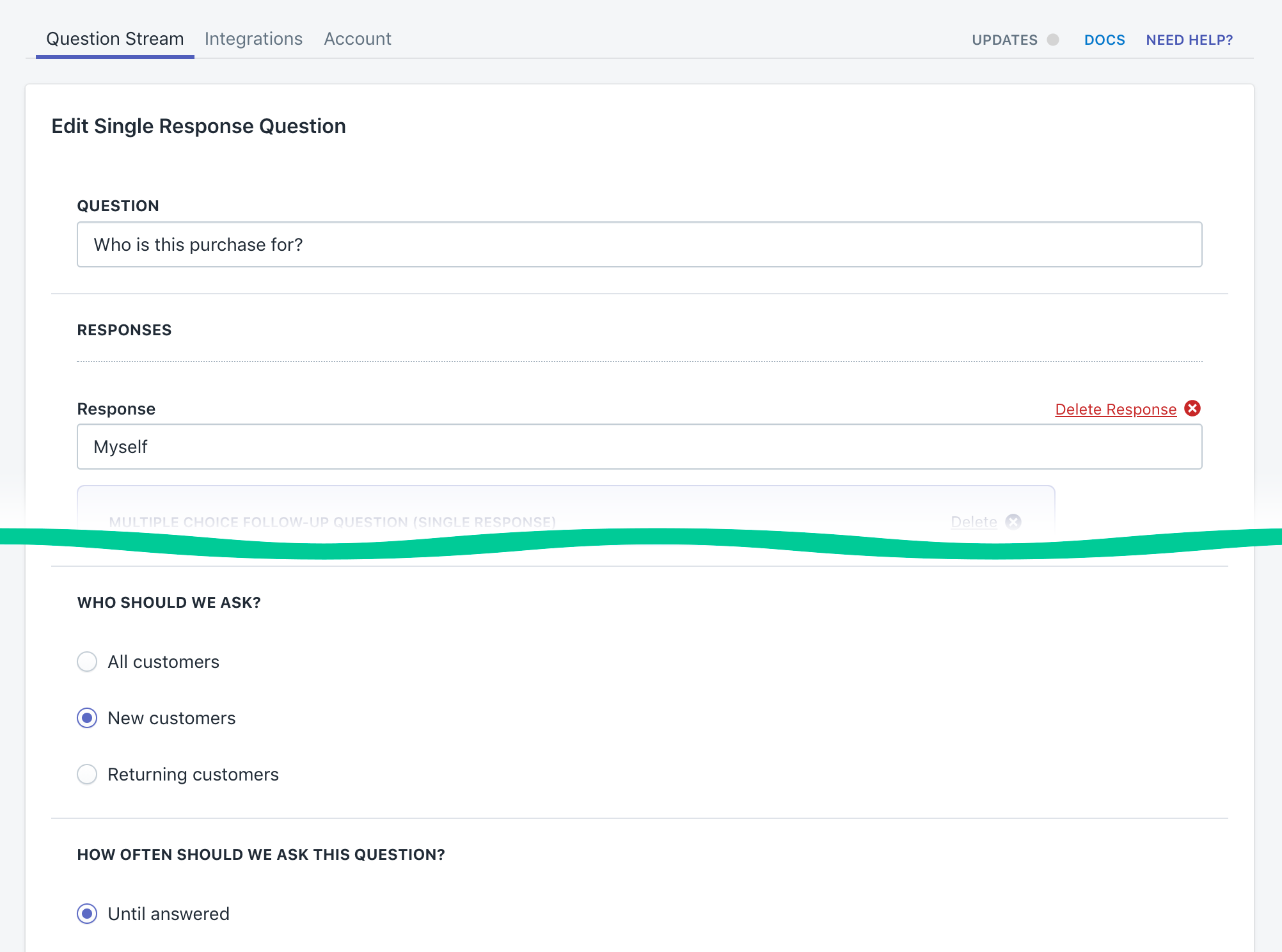
Any answers other than “Myself”, automatically segment the shopper as a buyer, not a user. A distinction that’s crucial for you automated marketing flows so you can continue to deliver the most useful content. After all, this buyer is a potential customer who already knows your products, where to get them and most importantly they know someone who advocates for your products. When someone is buying your product for someone else they’ve already cleared so many hurdles to a conversion.
Segmenting Buyers vs Users also helps clean up your performance metrics. Splitting your customers into those two groups might reveal that buyers have a higher churn rate and lower email open rate.
It can also reveal which products perform best as gifts which can guide additional business metrics and decisions. Pastreez , a client of Fairing, used this question to better understand the variance of their average order value (AOV). After analyzing customer responses, they discovered that buyers were spending twice as much per order as users.
How would you describe yourself?
Another popular survey we see is the self-categorizing question “which best describes you?” . This question gives valuable insights into how you should be allocating your marketing spend and also allows for easy segmentation as you can then send relevant info based on a specific buyer persona.
For instance on a recent podcast our CEO shared the story of a niche electronics brand was operating under a core assumption that roughly 3/4 of its customer base were professional users. But when it asked its shoppers to self-segment as Student, Hobbyist or Professional:
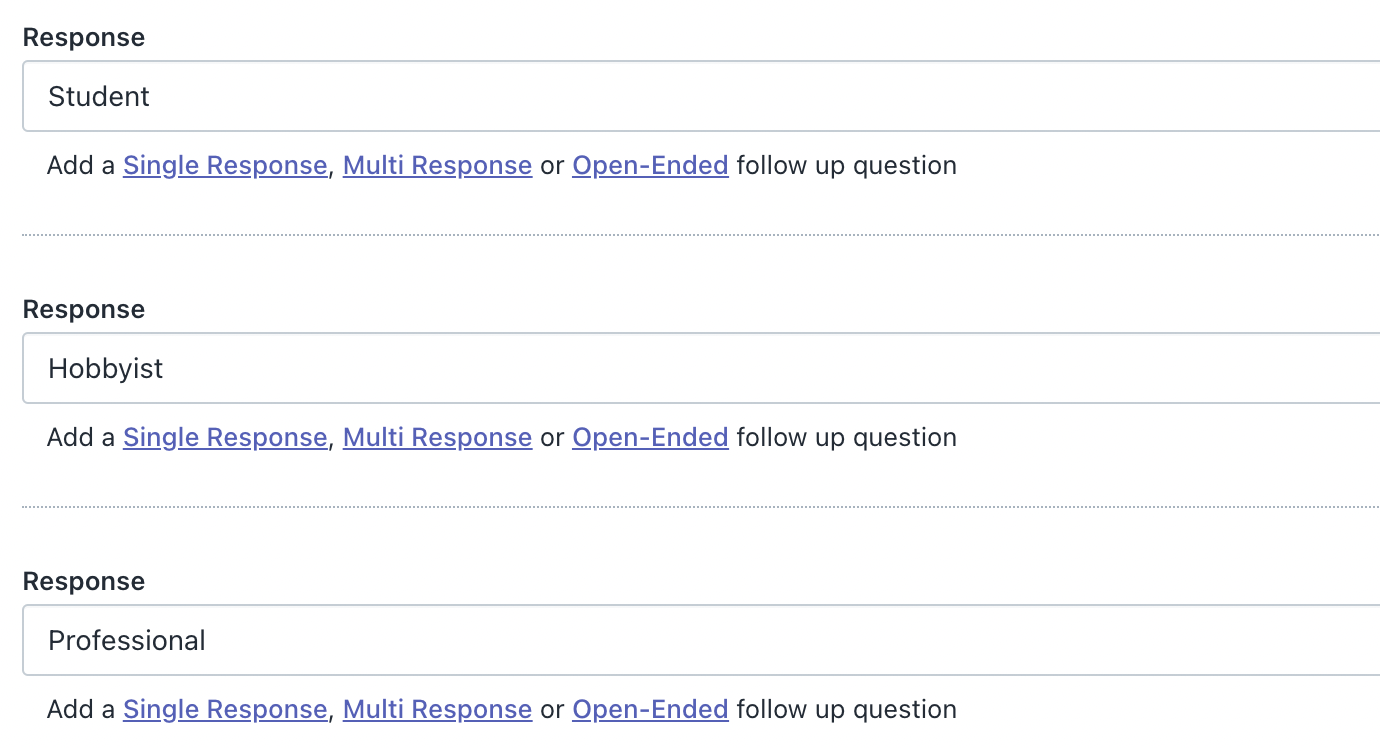
Within just two days, it was discovered that only 20% of their customer base were professionals, instead of the previously assumed 75%. This presented the brand with a significant opportunity to expand its market and message. Such insights are not uncommon among various Fairing brands, and it is one reason why we recommend asking this question early on during your 14-day free trial
.

Enabling Your Klaviyo Integration
To start pushing your Fairing survey data to Klaviyo , you’ll need to be on the Fairing Enhanced Plan. To enable, simply click Integrations, locate Klaviyo, and click Turn On.
On the following screen, you’ll be asked to enter your API credentials. You may need to create a new API key in Klaviyo, to do so simply go to your Klaviyo Account → Settings → API Keys. We’ve included a link on the Klaviyo setup page to get you there quickly. Create a new key and copy and paste it into your Fairing Klaviyo settings.
About Klaviyo
Klaviyo is a marketing automation and email platform designed for growth-minded eCommerce merchants. Klaviyo gives you powerful functionality without sacrificing the time it takes for your marketing to make an impact on your bottom line.





